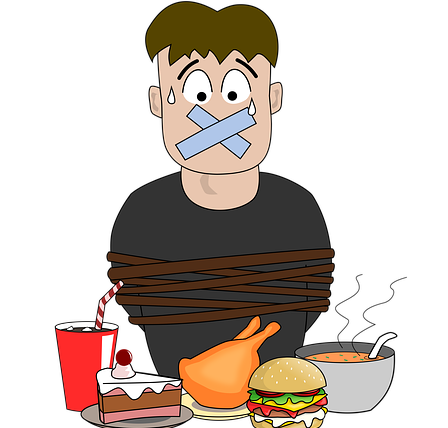Introduction
Are you looking to shed some pounds without the hassle of counting calories every day? Intermittent fasting might be the solution you’ve been searching for. This method has gained popularity for its simplicity and effectiveness. In this article, we’ll explore a 30-day plan designed specifically for beginners aiming to lose weight through intermittent fasting.
What is Intermittent Fasting?
Basic Principles
Intermittent fasting (IF) is not about what you eat, but rather when you eat. The basic principle is to alternate periods of eating with periods of fasting. This pattern helps your body to use up stored fat for energy, aiding weight loss.
Popular Methods
Several IF methods exist, but the most common ones are:
- 5:2 Diet: Eat normally for five days a week and limit calories (500-600) on the other two days.
- Try Eat-Stop-Eat: Fast for a full 24 hours once or twice weekly.
Benefits of Intermittent Fasting
Weight Loss
One of the main reasons people try IF is for weight loss. By shortening the eating window, you naturally end up consuming fewer calories. Plus, fasting periods increase your body’s reliance on stored fat for energy.
Improved Metabolism
IF can boost your metabolism by promoting hormonal changes that aid fat burning. Insulin levels drop, which facilitates fat burning, and growth hormone levels increase, which helps muscle gain and fat loss.
How Intermittent Fasting Works
Caloric Restriction
Although IF isn’t solely about counting calories, it naturally leads to a caloric deficit. When you eat within a shorter timeframe, you are likely to eat less, making weight loss more achievable.
Hormonal Changes
Fasting leads to lower insulin levels, higher growth hormone levels, and an increase in norepinephrine (noradrenaline) which all boost the breakdown of body fat and facilitate its use for energy.
Preparing for Intermittent Fasting
Setting Realistic Goals
Before starting, set achievable goals. Aim to lose about 1-2 pounds per week, which is considered safe and sustainable. Understand that weight loss may be gradual, especially in the beginning.
Creating a Schedule
Choose an IF method that fits your lifestyle. If you’re a night owl, the 16/8 method might be suitable, with eating from noon to 8 PM. Ensure your schedule is consistent to help your body adapt.
The 30-Day Plan
Week 1: Adjusting
In the first week, focus on gradually extending your fasting period. Start with a 12-hour fast and increase it by one hour each day until you reach your desired fasting period.
Week 2: Building Momentum
By the second week, your body should start adjusting. Stick to the chosen method and ensure you eat balanced meals during your eating window. Include plenty of protein, healthy fats, and vegetables.
Week 3: Fine-Tuning
Pay attention to how your body feels. Adjust your eating window if necessary and ensure you are drinking plenty of water. This week is about optimizing your routine to fit your lifestyle.
Week 4: Mastering the Routine
By the fourth week, intermittent fasting should feel like second nature. Focus on maintaining consistency and listen to your body’s hunger and fullness signals.
Tips for Success
Staying Hydrated
Drink plenty of water throughout the day. Staying hydrated can help reduce feelings of hunger and keep your energy levels up.
Choosing the Right Foods
Focus on nutrient-dense foods during your eating window. Include lean proteins, whole grains, healthy fats, and plenty of fruits and vegetables. Avoid processed foods and high-sugar items.
Potential Challenges and Solutions
Hunger Pangs
Feeling hungry during fasting periods is common. Stay hydrated with water, herbal tea, or black coffee to help suppress hunger. With time, your body will adjust.
Social Situations
Social gatherings can be tricky. Plan your eating window around events or politely inform your host about your fasting routine. Flexibility can help maintain your social life without compromising your goals.
Monitoring Weight
Weigh yourself once a week to track progress. Steer clear of weighing yourself daily as weight fluctuations can occur due to numerous factors.
Reflecting on Energy Levels
Keep a journal of your energy levels, mood, and overall well-being. This can help you understand how IF is impacting your life beyond just weight loss.
10. Conclusion
Intermittent fasting is a powerful tool for weight loss, but it’s essential to approach it with the right mindset and preparation. By following a structured 30-day plan, you can give your body the time it needs to adjust and start seeing results. Keep in mind, consistency and tuning in to your body’s signals are essential. Happy fasting!
FAQs
Can I drink water during the fasting period?
Yes, you should drink plenty of water during your fasting period. Staying hydrated is crucial for health and can help reduce hunger.
Can I drink coffee or tea while fasting?
Yes, you can drink black coffee or herbal tea without sugar or cream. These can help curb hunger and provide a small energy boost.
Will intermittent fasting slow down my metabolism?
No, intermittent fasting can actually boost your metabolism by promoting hormonal changes that facilitate fat burning.
Can I exercise while intermittent fasting?
Yes, you can exercise while fasting. However, listen to your body and adjust the intensity of your workouts if needed.
What if I feel very hungry or tired?
It’s normal to feel hungry or tired initially. Drink water, get plenty of rest, and consider adjusting your eating window or fasting method if needed.




